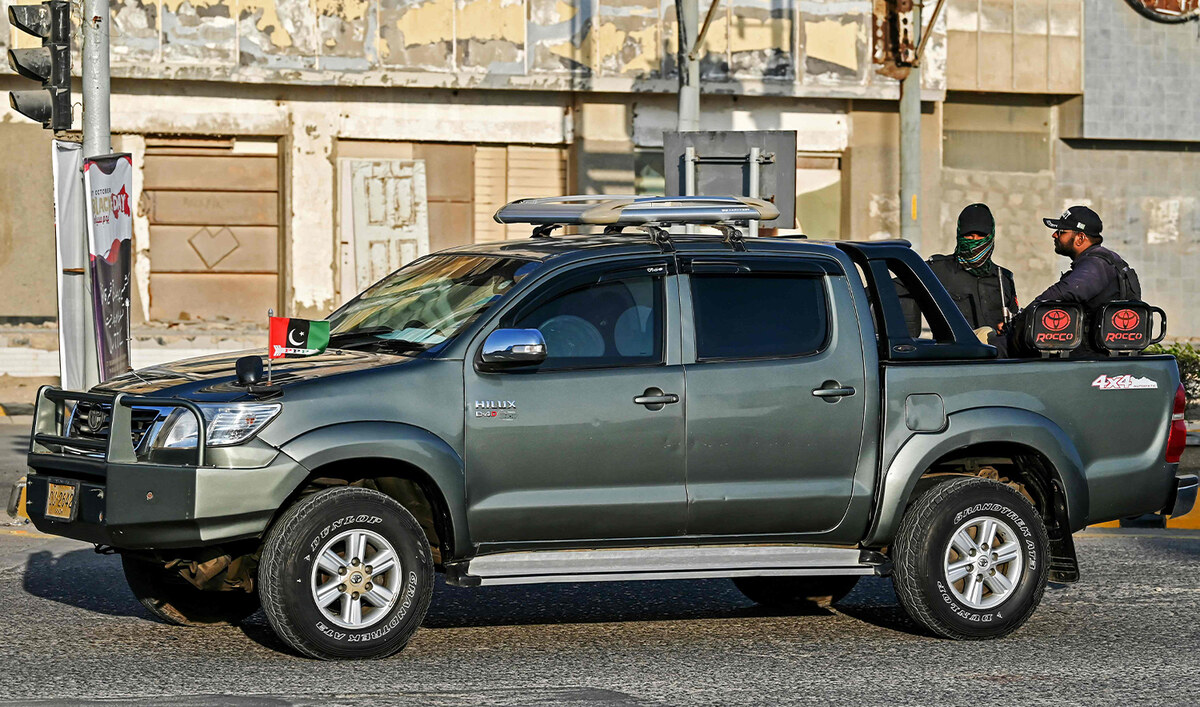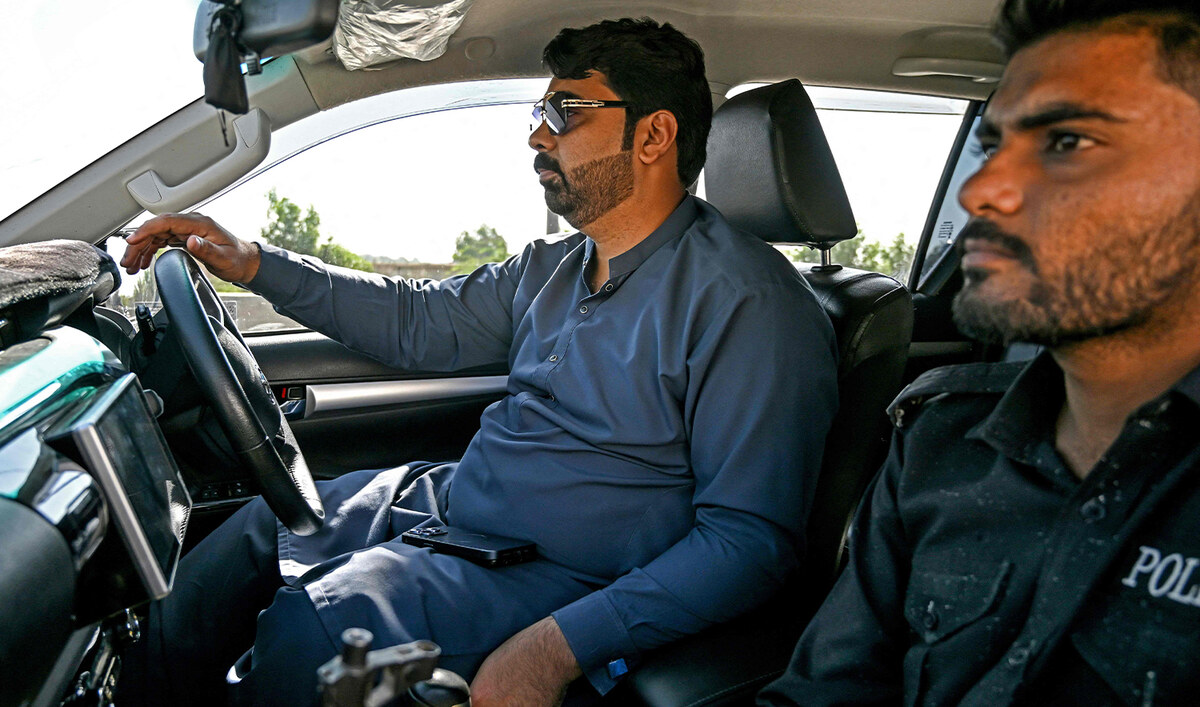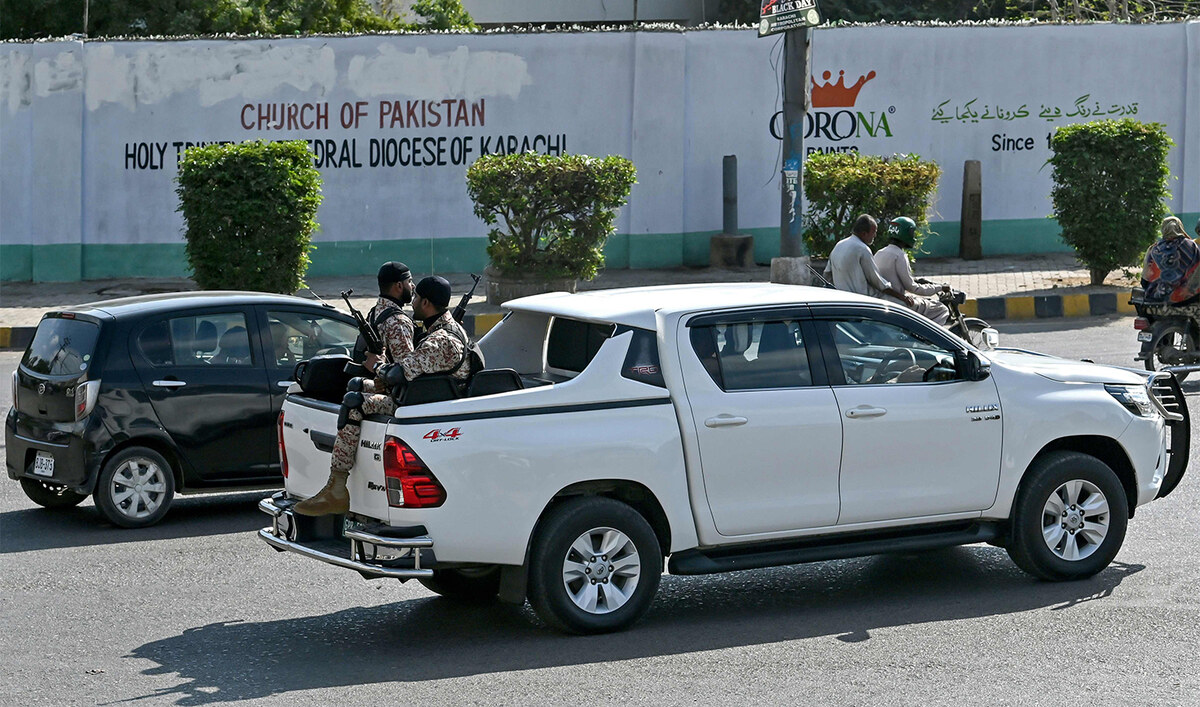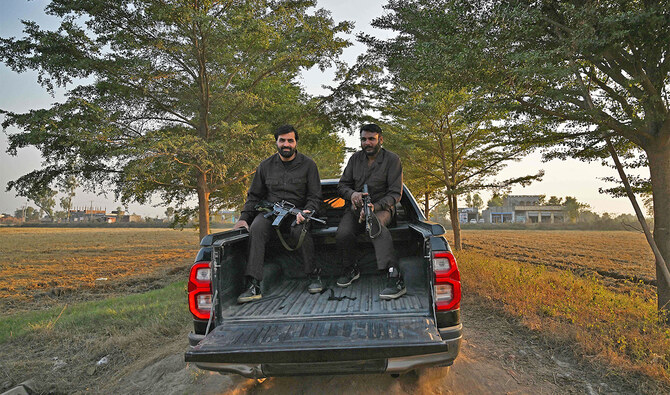KARACHI: In Pakistan’s largest city, cars inch forward in bumper-to-bumper traffic. But some seamlessly carve through the jam: SUVs flanked by Toyota Hilux pickup trucks.
The Hilux has become a symbol of power, affluence and intimidation in a society marked by significant class divisions.
“The vehicle carries an image that suggests anyone escorted by one must be an important figure,” 40-year-old politician Usman Perhyar told AFP.
“It has everything — showiness, added security and enough space for several people to sit in the open cargo bed.”

This photograph taken on November 12, 2024 shows security personnel riding on the back of a Toyota Hilux pick-up truck locally known as 'Dala', bearing a flag of Pakistan Peoples Party (PPP), along a street in Karachi. (AFP)
On Karachi’s chaotic roads, Hiluxes part the traffic, speeding up behind cars and flashing their lights demanding drivers move out of their way.
The Hilux first became popular among feudal elites for its reliability in rural and mountain regions.
But in recent years, the “Dala,” as it is locally known, has soared in popularity as an escort vehicle among newly successful urban business owners.
Guards with faces wrapped in scarves and armed with AK-47s can be packed into the back of the truck, its windows blacked out.
“It is a status symbol. People have one or two pickups behind them,” said Fahad Nazir, a car dealer based in Karachi.

This photograph taken on November 11, 2024 shows local politician Usman Perhyar (L) driving a Toyota Hilux pick-up truck locally known as 'Dala', along a street in Karachi. (AFP)
The Hilux debuted in 1968, but the model that became popular in Pakistan was the mid-2000s Hilux Vigo.
It was later upgraded and rebranded as the Revo, with prices ranging from 10 to 15 million rupees (approximately $36,000 to $54,000).
Their prices have remained steady and they retain excellent resale value in a market traditionally dominated by their manufacturer, Toyota.
“Amongst whatever luxury items we have, this is the fastest-selling item,” car seller Nazir told AFP.

This photograph taken on November 20, 2024 shows politician Ali Warraich escorted by his private security personnel on a fleet of Toyota vehicles, to a meeting with residents in Gujrat, Punjab province. (AFP)
Dealers say there was a spike in rentals during February’s national elections.
“I swear to God, you can’t run an election without a Revo,” said Sajjad Ali Soomro, a provincial parliamentarian from Imran Khan’s Pakistan Tehreek-e-Insaf (PTI) party.
In the eastern city of Gujrat, politician Ali Warraich — from the ruling Pakistan Muslim League-Nawaz party — finds it essential to travel with an escort of two of the trucks.
They allow him to navigate off-road terrain to attend dozens of weddings and funerals a month.
“Politics without this vehicle has become nearly impossible,” he tells AFP. Without one, he argues, potential supporters could question his influence and turn toward competitors.
“As a result, it has become a basic necessity,” he said.

This photograph taken on November 12, 2024 shows paramilitary personnel riding on the back of a Toyota Hilux pick-up truck locally known as 'Dala', as they patrol along a street in Karachi. (AFP)
The truck has also become a trademark in the suppression of dissenting voices, activists told AFP, with the word “Dala” serving as a euphemism for military intelligence agencies involved in covert operations.
The unmarked cars with plainclothes men inside were used extensively by authorities rounding up senior PTI leaders and officials in recent crackdowns — reinforcing the vehicle’s notorious reputation.
“Every time I see this vehicle on the road, I go through the same trauma I endured during my custody with agencies,” said one PTI member who was picked up earlier this year.
Former leader Khan was bundled into a black Dala by paramilitary soldiers when he was arrested in May 2023 in the capital Islamabad, a detention he blamed on the powerful military leadership.
He later accused political heavyweight and three-time prime minister Nawaz Sharif of trying to win the election “through Vigo Dala” — a swipe alleging the military was “carrying” his campaign.
Pakistani poet and activist Ahmad Farhad, known for criticizing the military’s involvement in politics, was taken away in a Hilux after a raid on his home in May by what he said were intelligence agencies.
“Sometimes, they park these vehicles around or behind my car, sending a clear message: ‘We are around’,” he told AFP. “A Dala aligns with their business of spreading fear, which they take great satisfaction in.”
In Karachi, a city rife with street crimes, the imposing Dala deters even outlaws.
“A typical mobile snatcher would opt for maybe looting a car as opposed to a truck,” said 35-year-old automobile enthusiast Zohaib Khan.
Increased street crime has led to more security checks by police, further slowing down movement across the city. But Hiluxes are immune.
Police “don’t typically stop me because they feel that I might be someone who might impact them in a bad way or harm them in some way or the other,” Khan said.








 ‘Ghoyoum’
‘Ghoyoum’ 









